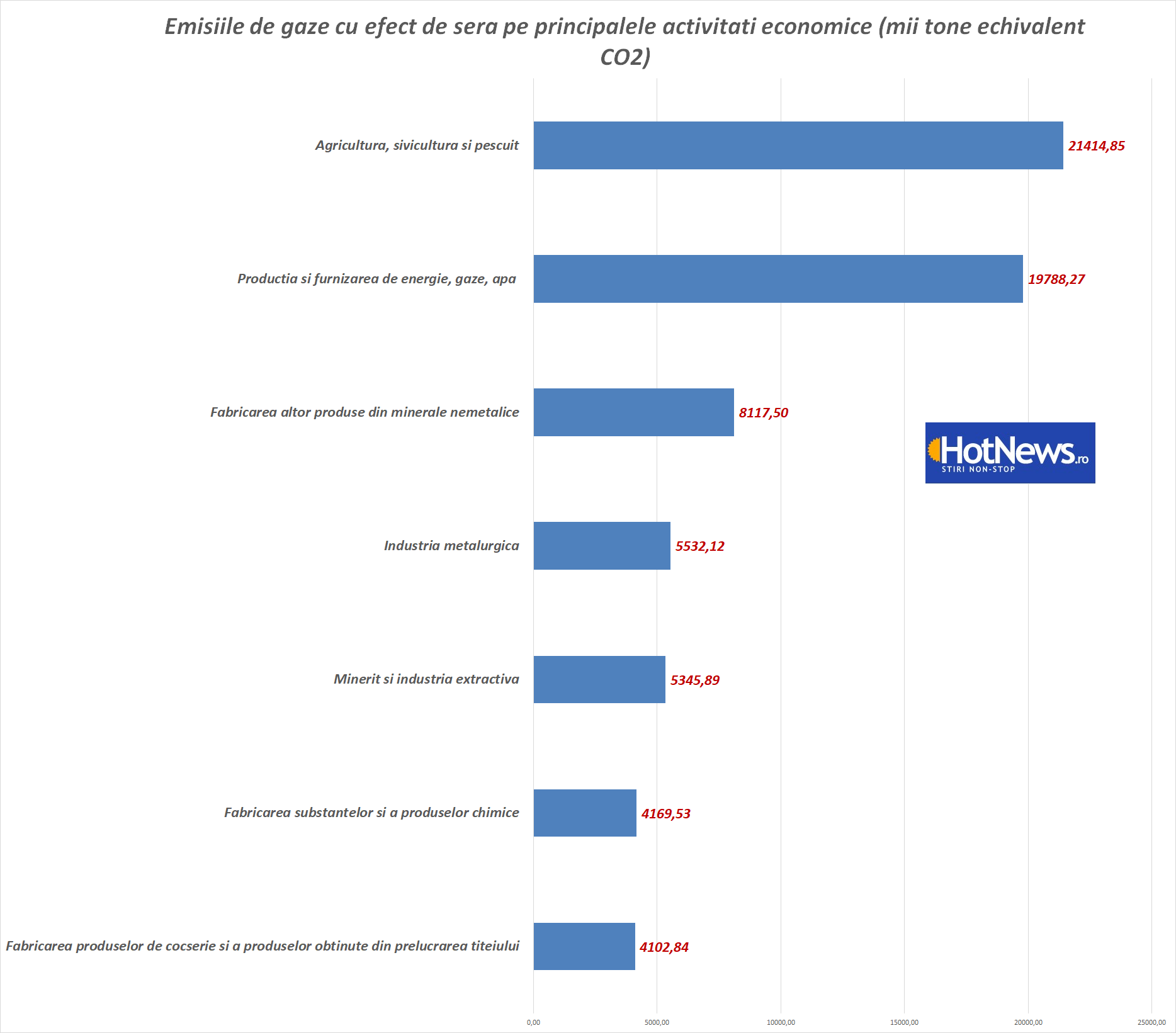
Emissions of greenhouse gases by the population have increased over the past 13 years by 6.9 million tons of CO2-equivalent (46.8%), most of which comes from transport (more than half of total emissions), according to an analysis on this topic published by the National Institute of Statistics.
The second main source of the increase in these emissions from the population is home heating (about a third of total population emissions, according to statistics).
Overall (population plus industry), greenhouse gas emissions from industry have trended downward over the past 13 years, registering a decrease of 31.2%.
Typically, when an economy grows, more materials such as energy, building materials, and metals are needed. By using materials more efficiently and obtaining greater economic value from each unit of resources used, the growth rate of material use can be lower than the rate of economic growth.
If the growth rate of material use is lower than the rate of economic growth, this is called the “decoupling” of material use from economic growth. Separating economic growth from environmental degradation is one of the main goals of the EU’s sustainable development strategy as part of the key task of “sustainable consumption and production”.
Therefore, it is very important to measure which and how many natural resources the economy uses over time and how efficiently they are used.
According to data published by the INS, over the past 26 years we have seen a decoupling of material consumption from economic growth, with the index of real GDP changing faster than the index of material consumption, indicating a positive signal about the pressure on the environment through the use of natural resources.
Emissions of greenhouse gases by industry

The largest share of greenhouse gas emissions belongs to the activities of production and supply of electricity and thermal energy, gas, hot water and air conditioning (CAEN D), followed by agriculture, forestry and fishing (CAEN A)
Greenhouse gas emissions had a negative trend during the analyzed period compared to 2008. In 2012, 2013, 2016 and 2019, there is an absolute separation of economic growth from greenhouse gas emissions. Greenhouse gas emission intensity shows how much gas was emitted to produce a unit of GDP (in constant 2010 prices), with a downward trend, this indicates a positive aspect regarding the impact of economic activity on the environment.
Source: Hot News
Lori Barajas is an accomplished journalist, known for her insightful and thought-provoking writing on economy. She currently works as a writer at 247 news reel. With a passion for understanding the economy, Lori’s writing delves deep into the financial issues that matter most, providing readers with a unique perspective on current events.